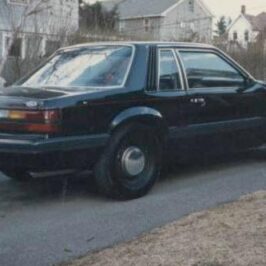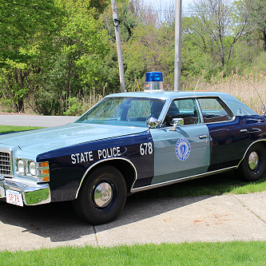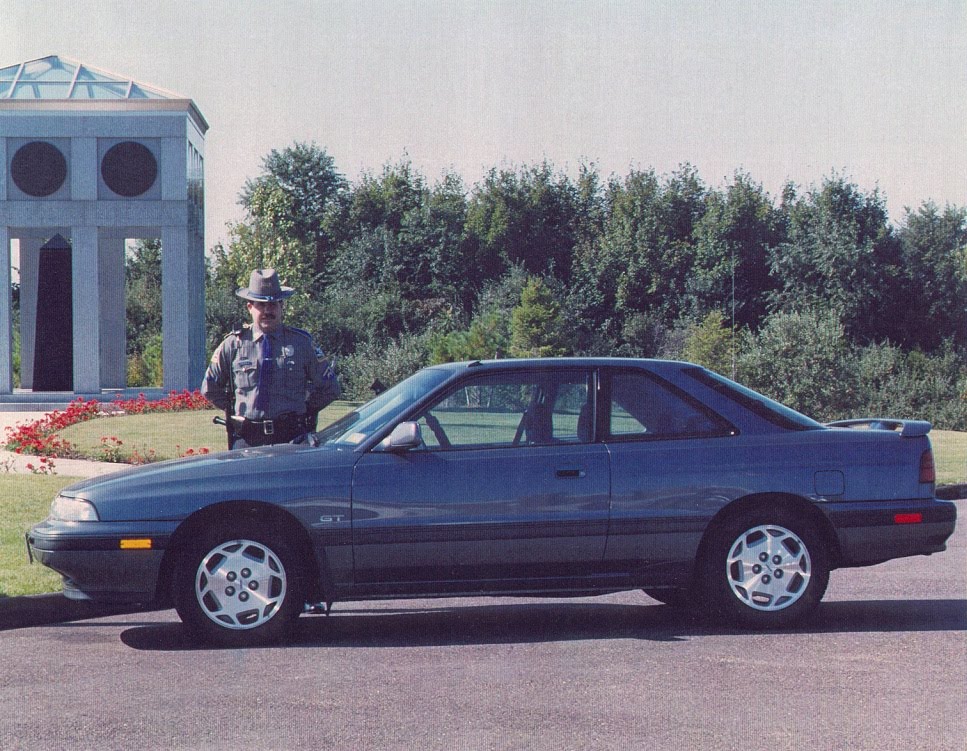
Connecticut is serious about enforcing their speed limits. In addition to the traditional full size Ford police cars, they’ve also used unmarked Ford Mustangs and even a Buick Grand National.
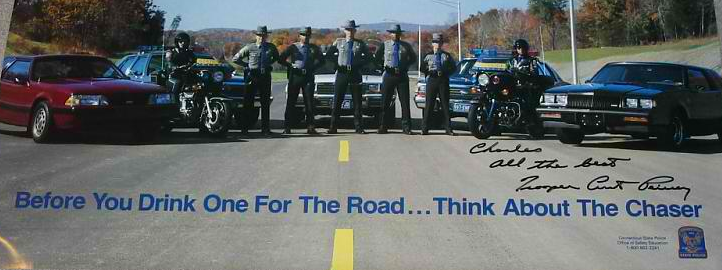
These cars could be difficult to handle on wet and snow covered roads, so it led Connecticut to search for a new high performance car for a patrol vehicle.
The new patrol vehicle would have to:
- Have enough trunk space to carry gear
- Get decent gas mileage
- Be comfortable to drive
- Have front wheel drive
- Not cost much more than a Crown Victoria
- Have a low enough profile to keep speeders from spotting it.
They eventually settled on the Mazda MX-6. Connecticut considered the Ford Probe, but it’s shorter and wouldn’t fit taller Troopers. Also, the door is 4-inches longer and represents a hazard when opening the door in traffic.
The only significant modification for police duty was a stronger alternator. They had automatic transmissions, ABS, and topped out at 120 miles per hour. Acceleration was more of an asset than top speed for chasing baddies because the state is so small, congested, and because the next trooper is just a few miles ahead.
At least 30 Mazda MX-6s of different colors were used by the Connecticut State Police. They replaced 5.0 Mustangs and Buick Grand Nationals for speed enforcement duty.

(Here’s a Connecticut State Police Mazda MX-6 next to one of their SSP Ford Mustangs)
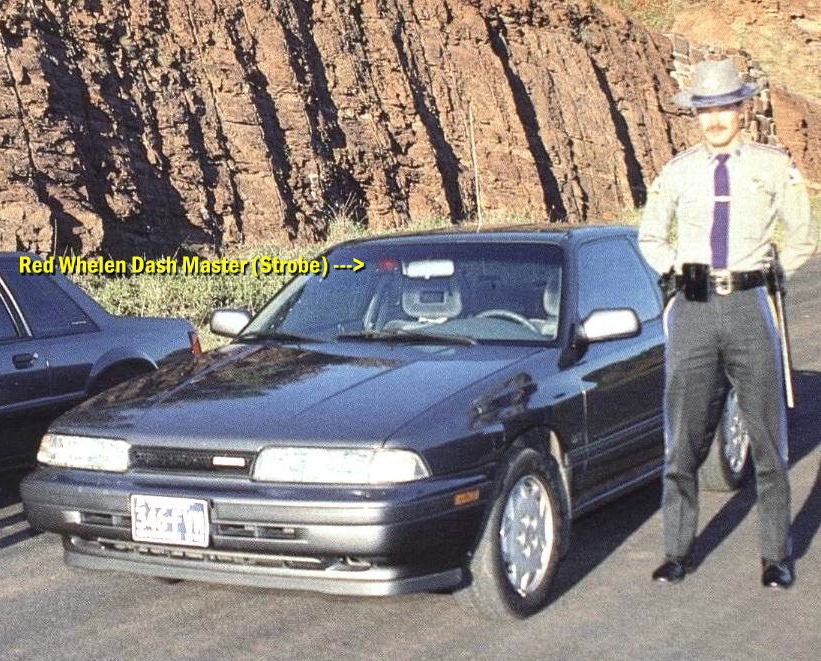
Note the red light at the top of the windshield on the passenger side. This appears to be a Whelen Dash-Master strobe light. It’s probably clipped on to the visor. The same type of light is probably in the rear window as well.

(Whelen Dash-Master Strobe Light)

According to a 1989 National Criminal Justice Reference Service abstract:
| NCJ Number: | NCJ 122535 |
| Title: | Unmarked Patrol Cars |
| Journal: | Law and Order Volume: 37 Issue:11 Dated: (November 1989) Pages: 20-23 |
| Author(s): | B Clede |
| Sale: | National Institute of Justice/ NCJRS paper reproduction Box 6000, Dept F Rockville, MD 20849 United StatesNCJRS Photocopy Services Box 6000 Rockville, MD 20849-6000 United States |
| Publication Date: | 1989 |
| Pages: | 4 |
| Type: | Issue overviews |
| Origin: | United States |
| Language: | English |
| Annotation: | Unmarked sports cars are effective in traffic enforcement because of their invisibility and high-performance features. |
| Abstract: | The Connecticut State Police Traffic Division, which has been running a group of unmarked Mustang LXs since 1984, recently purchased six sporty, two-door Mazda MX-6 GTs. These Mazdas are replacing some of the older Mustangs. Mustangs have been used around the country long enough now that some traffic officers say they are no longer necessary because there are other cars that can be handled more safely during high-speed pursuits. The California Highway Patrol, known for its innovations, is now testing a Toyota Camry sedan for possible use as a new lightweight cruiser. There are currently no plans to replace the Mustangs or Chevrolet and Dodge sedans used now, but there is concern that the large gas-guzzling rear-wheel drive cars will disappear in the future. In fact, fuel efficiency is one major reason that traffic enforcement agencies are replacing their old cars. Other reasons include the ability of the newer cars to reach a higher speed sooner than the older cars, and the availability of safety features such as air bags and four-wheel disc brakes with anti-lock braking systems. |
| Main Term(s): | Highway patrol |
| Index Term(s): | Motor patrol ; Police patrol ; Traffic law enforcement |
Resources:
February 1990 Popular Mechanics article by Mike Allen.
National Criminal Justice Reference Service abstract found at: http://www.ncjrs.gov/App/Publications/abstract.aspx?ID=122535




